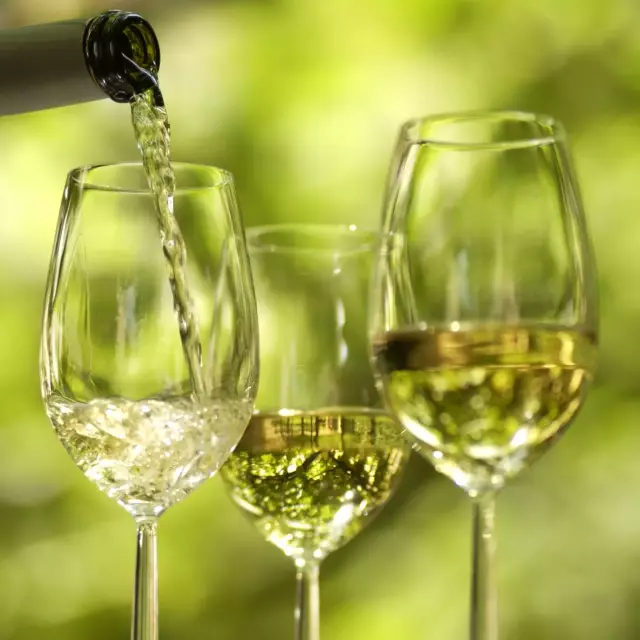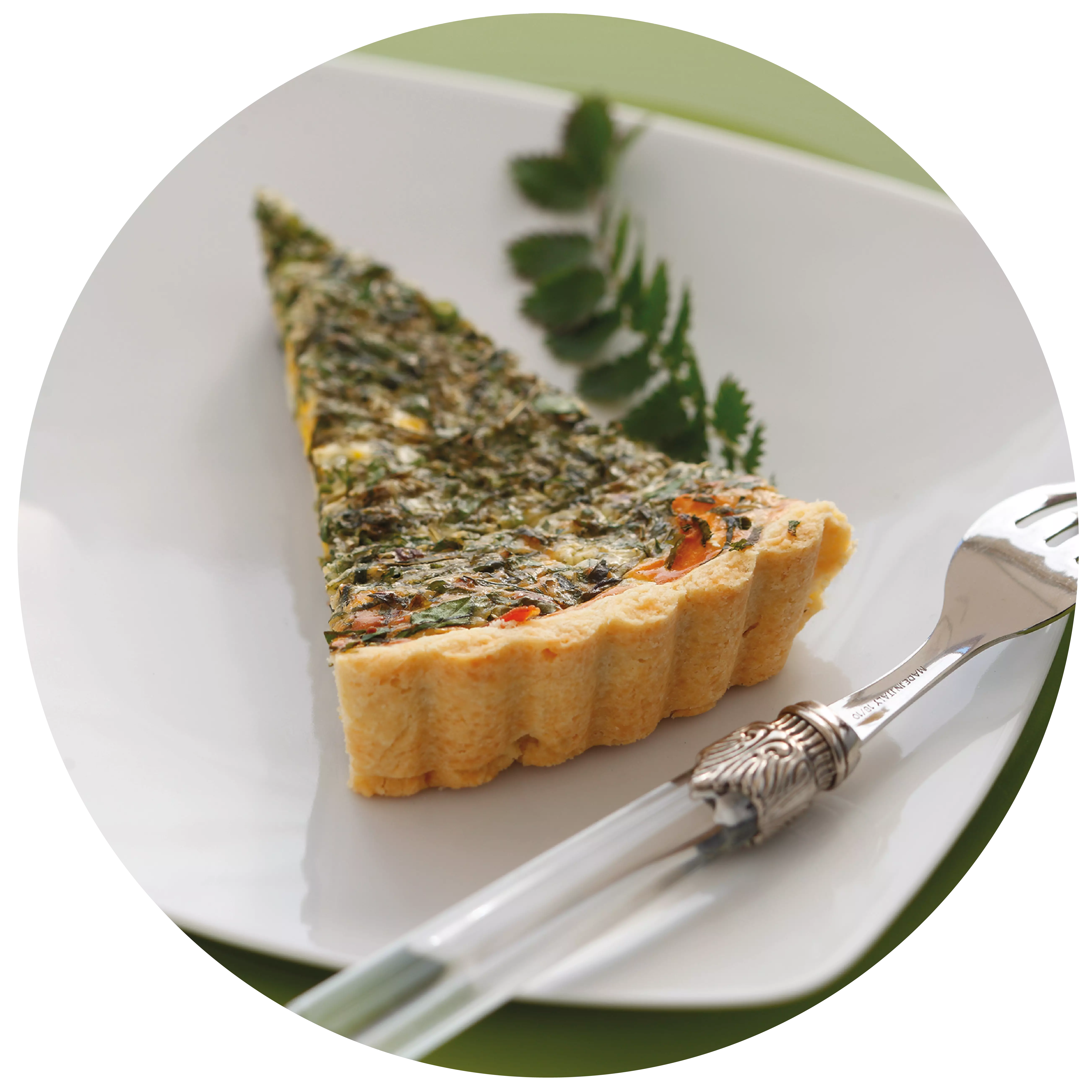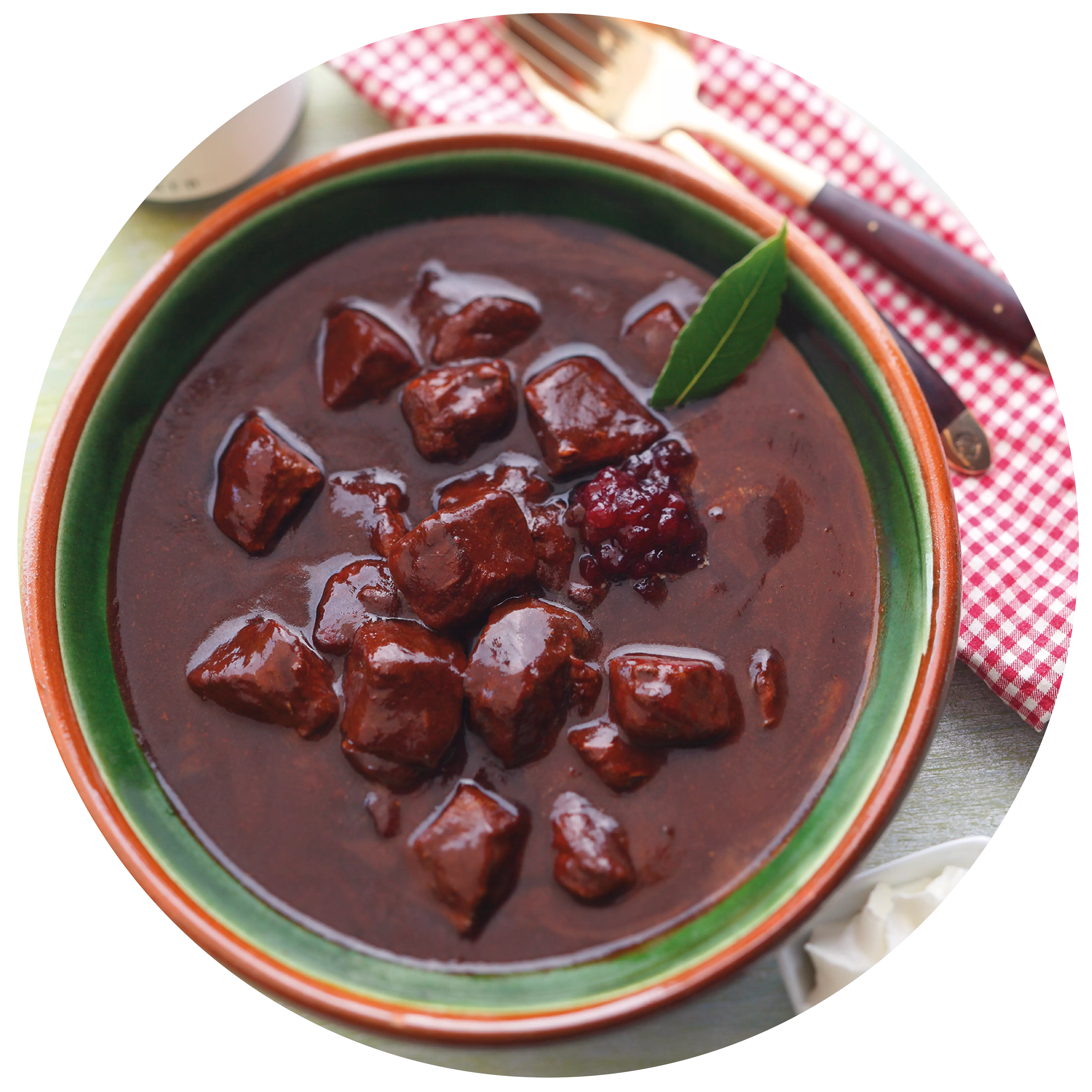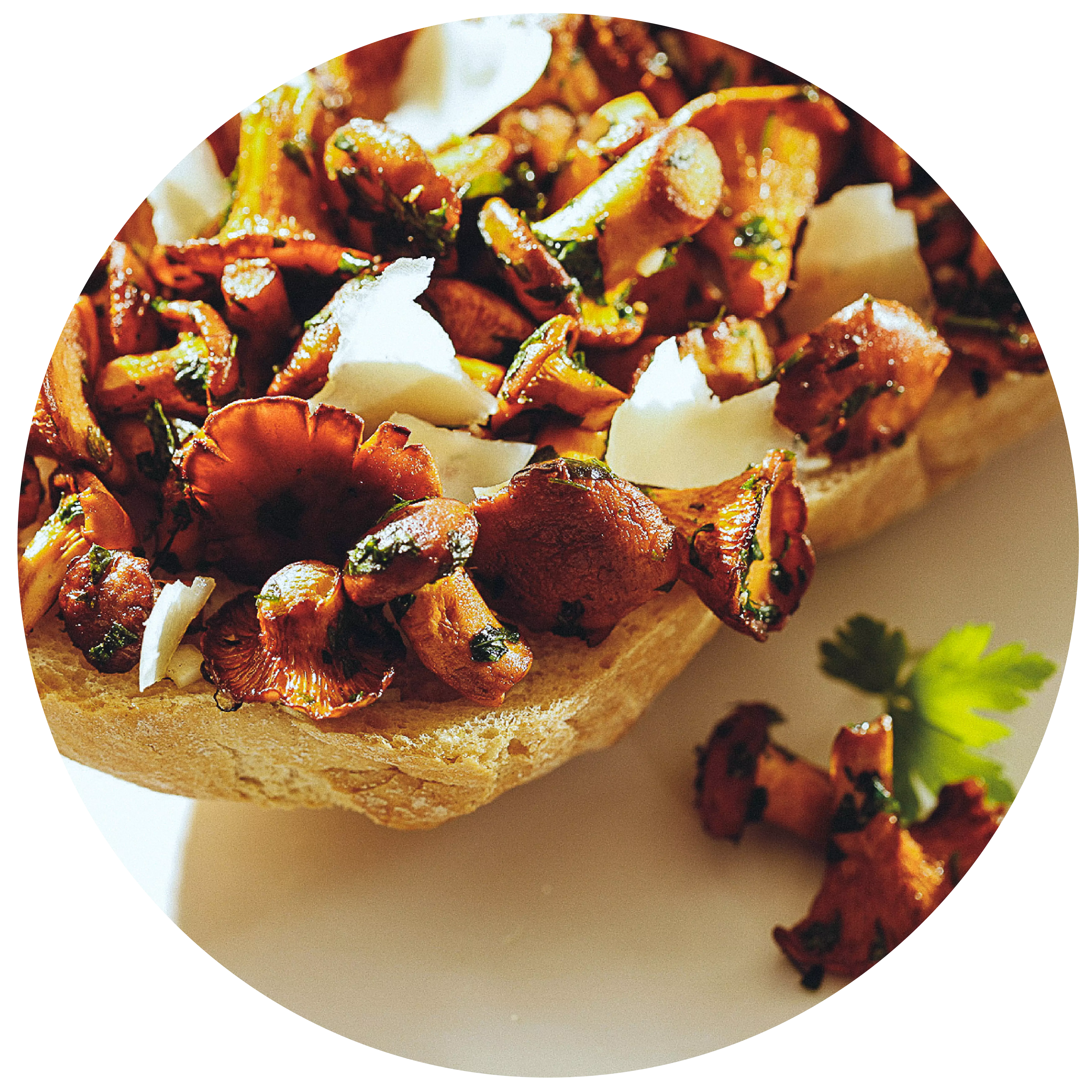Blanc de Noir

"White from black" - this is the literal translation of "Blanc de Noir" and stands for a white wine made from dark blue to black grapes.
Facts
-
100 %
red grapes
-
2021
was "Blanc de Noir" redefined in terms of wine law
As the name suggests, this form of winemaking has its origins in France, where the red grapes of Pinot Noir (Spätburgunder) and Pinot Meunier (Schwarzriesling) have always been processed into white wines as the basis for champagne.
This is possible because red berries generally have light flesh. The red pigment, the so-called anthocyanins, are mainly present in the berry skins. If the juice from red grapes is to remain white, no colourants from the skins may pass into the must. It is therefore important that the red grapes, which are as healthy as possible, are only pressed gently. The light colored must obtained is then fermented to a white wine. A typical Blanc de Noir has a light color and can sometimes have hints of yellow-gold.
If the cellar master leaves the squeezed red berries in the pressed juice for a little longer - the experts then speak of a longer "maceration time" – this is when a little more color passes from the skins into the must and a rosé develops.
In terms of wine law
After the 10th law amending the Wine Act came into force in January 2021, according to the new Wine Ordinance the designation "Blanc de Noir" or "Blanc de Noirs" may only be used for domestic wine, sparkling wine, quality sparkling wine or semi-sparkling wine if it is a product with a protected designation of origin (PDO) is made from fresh red wine grapes like a white wine and has the typical color of white wine.
Why Blanc de Noir?
The white wines obtained from the red grapes are characterized by their distinctive fruit aromas, pleasant freshness and moderate acidity. They combine the full flavor of a red wine with the fruitiness of a white wine and thus display the characteristics of both types. Blanc de Noirs are excellent food companions that go well with a wide range of dishes.
Flexibility and positive side effects
For winemakers who mainly cultivate red grape varieties, the production of Blanc de Noirs is also an opportunity to react flexibly to the increasing demand for white wine. On the other hand, there is a positive side effect for the production of red wine: if the light-colored must for a Blanc de Noir is removed before the maceration, the ratio of the color and tannin-containing skins to the remaining pressed juice in the mash changes. As a result, winemakers and wine lovers can enjoy more complex and color-intensive red wines.
How is Blanc de Noir defined under wine law in Germany?
According to the Wine Law, the name "Blanc de Noir" or "Blanc de Noirs" may only be used if it is a product with a protected designation of origin (PDO), pressed from fresh red grapes like a white wine and with the color typical of white wine.
Varietals

More recipe ideas
the "Frankfurt Green Sauce" Quiche with herbs
the "Frankfurt Green Sauce"
- 200 Gramm Mehl
- 100 Gramm Butter
- je 1 Bund Kräuter für Frankfurter Grüne Sauce (Petersilie, Kresse, Kerbel, Borretsch, Sauerampfer, Schnittlauch, Pimpernelle)
- 100 - 125 Gramm Schwarzwälder Schinken
- 7 ganze Eier
- 125 ml Sahne
- 100 Gramm Frischkäse
- 1 EL Zitronensaft
- nach Geschmack Salz & Pfeffer
Knead the flour and butter with 4 tbsp water and a teaspoon of salt to form a smooth dough. Line a mould with it and leave to cool for 30 minutes.</p
<p>Hard boil 4 eggs. Wash, drain and finely chop the herbs from the Frankfurt green sauce. Cut the ham into wafer-thin slices and spread on the pastry base. Chop the hard-boiled eggs into small
and spread over the top. Mix the 3 eggs, cream and fresh cheese and season with 1 tbsp lemon juice, salt and pepper, then fold in the herbs. Spread the mixture over the pastry base.
Bake at 180 °C (gas mark 4) on the middle shelf of the oven for about 30 minutes.
- Riesling (trocken)

with strong red wine Wild boar ragout
with strong red wine
- 800 Gramm Fleisch vom Wildschwein (Keule o. Schulter)
- 80 Gramm Bauchspeck
- 100 Gramm Zwiebeln
- 60 Gramm Karotten
- 60 Gramm Staudensellerie
- 1 TL Tomatenmark
- 200 ml kräftigen Rotwein
- 100 ml Portwein
- 1 Liter braune Wildbrühe
- 1 TL Preiselbeeren
- 1 EL geschlagene Sahne o. Sauerrahm
- 20 Gramm Mehl
- 1 Stück Lorbeerblatt
- je 1 Zweig Rosmarin und Thymian
- 4 zerdrückte Wacholderbeeren
- 1/2 TL Senf
- nach Belieben Salz & Pfeffer
Clean and wash the vegetables and cut into evenly sized cubes.
Remove the fat, skin and tendons from the wild boar meat and cut into 3 cm cubes. Season with salt and pepper and sprinkle with flour. Heat the oil in a frying pan and brown the meat on all sides. Add the vegetables and diced bacon and fry. Add the tomato purée and stir fry. Deglaze with the red wine and port, reduce and pour in the brown game stock. Add the spices to the meat in a small spice bag and leave the ragout to simmer in the oven at 160°C for approx. 1½ hours.
Then remove the pieces of meat, remove the spices, strain the sauce, add the cranberries and mustard and leave to reduce for about 15 minutes. If necessary, thicken with a little cornflour. Serve with the whipped cream.
- Spätburgunder / Pinot Noir (trocken)

with wild mushrooms Cream of potato soup
with wild mushrooms
- 300 Gramm geschälte Kartoffeln
- 100 Gramm Wurzelgemüse
- 100 Gramm Waldpilze
- 1 ganze Zwiebel
- 1 ganze Knoblauchzehe
- 30 Gramm Speckwürfel
- 40 Gramm Margarine
- 750 ml Brühe
- 200 ml Sahne
- 1 Zweig Thymian
- nach Belieben Petersilie, Butter, Salz, Pfeffer, Muskat
Clean, wash and finely dice the root vegetables. Finely dice the onion and garlic clove and finely chop the thyme. Sauté the diced bacon with the margarine in a pan until lightly browned, add the diced onion, garlic, root vegetables and thyme. Sauté, add the stock and cook for 2 minutes.
Finely grate the potatoes, add to the soup and cook for a further 5 minutes, add the cream, season and flavour. Clean, wash and chop the mushrooms and sauté in a pan with butter. Season with salt and pepper, sprinkle with chopped parsley and pour over the soup when serving.
- Riesling (trocken)
- Riesling (halbtrocken & feinherb)

with fresh chanterelles Autumn bruschetta
with fresh chanterelles
- 4 Ciabatta-Brötchen
- 200 Gramm kleine Pfifferlinge
- 4 EL kleingehackte Petersilie
- 4 Zehen Knoblauch
- 80 Gramm Pecorino (Hartkäse)
- 8 EL kaltgepresstes Olivenöl
- Eine Prise Salz & Pfeffer
Preheat the oven to 200 degrees.
Clean the chanterelles. Sauté the parsley in a pan with half of the oil, then add the mushrooms and cook over a low heat for approx. 5 minutes.
Slice the rolls and bake for approx. 5 minutes until crispy.
Chop the garlic into small pieces, spread on the warm bread rolls and drizzle with the other half of the oil. Coarsely grate the pecorino.
Stir the chanterelle and parsley mixture into the pecorino and spread over the halves of the rolls.
- Pinot Gris (trocken)
- Federweißer (brut nature)

Events
-
Show
winetasting in our winery - cheese & wine
Mainz-Hechtsheim




